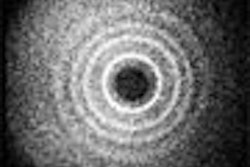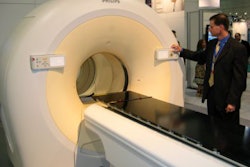Monitoring the effectiveness of chemotherapy for brain cancer is a critical element in the treatment of the disease. Brain cancers have a high mortality rate compared with other cancers, and relapse treatments are generally not as successful as primary treatments. A recent study by French researchers indicates that monitoring chemotherapy efficacy with FDG-PET may detect recurrence of high-grade glioma earlier than imaging studies conducted with MRI.
"Distinction between tumor recurrence and cerebral necrosis as an iatrogenic complication after chemotherapy can be problematic with structural imaging techniques (CT and MRI) because of the difficulty in differentiating between tumor, gliosis, and edema appearing as mass lesions with unspecific contrast enhancement due to blood-brain barrier breakdown," the authors wrote in a poster presentation at the 2006 Society of Nuclear Medicine (SNM) conference in San Diego.
The multidisciplinary team from the nuclear medicine, oncology, and radiology units of the Centre René Gauducheau cancer center in Nantes-Saint Herblain, France, set out to evaluate FDG-PET as a tool to monitor chemotherapy response in glioma patients and detect its early recurrence in comparison with MRI.
The researchers obtained a total of 40 attenuation-corrected scans from 11 patients who presented with grade III astrocytoma. The FDG-PET studies were conducted on a Discovery LS PET/CT system (GE Healthcare, Chalfont St. Giles, U.K.) following the administration of 5 MBq of FDG per kilogram of patient weight. The scans were performed at baseline, after the third and sixth course of chemotherapy, and during clinical follow-up.
The scientists then compared these results with contrast-enhanced MRI data as well as tumor to opposite normal lobe (T/N) ratios, which were analyzed according to follow-up time.
The patient cohort was monitored by the team during chemotherapy treatments and then during a mean follow-up time of 15.4 months over a four- to 24-month period. Six of the patients responded to treatment, while five did not.
The researchers reported that in the six patients who responded to treatment, on the basis of clinical examination and MRI, all had a significant decrease in their T/N ratio -- p < 0.05, compared with baseline values -- after the third course of chemotherapy and throughout the follow-up period.
The FDG-PET studies showed their muscle in the patients who did not respond to chemotherapy. The group observed a significant mean increase of 25% ± 10 in the T/N ratio during these patients' chemotherapy and an even greater increase, 58% ± 35, during the follow-up of these cases.
"Four cases of recurrence were identified with FDG-PET earlier than with MRI (median of eight months ± 5.7 months), and for one patient, recurrence was detected with FDG-PET and MRI at the same time," the researchers wrote.
They also found that the FDG-PET studies demonstrated a greater sensitivity than MRI in detecting recurrent high-grade glioma -- 80% and 70%, respectively -- with the same 100% specificity. The scientists also noted that the negative predictive value, which is important when considering changing therapy, of FDG-PET was higher at 83.3% than that of MRI at 63%.
The group reported that it is involved in further studies with a larger number of patients to confirm the initial data from this study, and that it will be conducting a long-term clinical follow-up to verify the prognostic value of FDG-PET. However, based on the results of this prospective study, the researchers believe that FDG-PET imaging can play a pivotal role in monitoring brain tumor response to chemotherapy.
"FDG-PET studies can provide new information on the metabolic effects of cancer therapy and can be used to detect recurrence of high-grade glioma earlier than with MRI," they wrote.
By Jonathan S. Batchelor
AuntMinnie.com staff writer
July 7, 2006
Related Reading
Dual-tracer PET possible for cerebral gliomas, June 5, 2006
Fluorescence-guided surgery improves glioma survival, April 28, 2006
Treatment with nucleotides and radiation effective in glioma model, October 12, 2005
Blood volume-focused MRI helps identify brain tumors, November 17, 2004
Delayed PET helps delineate gliomas, November 5, 2004
Copyright © 2006 AuntMinnie.com



















